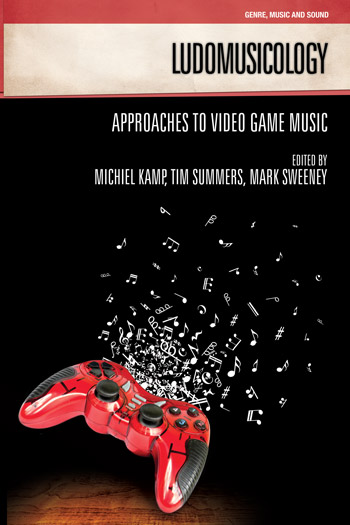Isaac’s Silence: Purposive Aesthetics in 'Dead Space'
Ludomusicology - Approaches to Video Game Music - Michiel Kamp
Mark Sweeney [+]
Description
This chapter is concerned with a particular set of relationships between video game music, film music, and modernist avant-garde music. In a case study of Jason Grave's soundtrack for the third-person science fiction survival horror games series, Dead Space, (EA, 2008, 2011, 2013). I delineate a particular soundworld and trace its origins back, via Hollywood, to the aleatory avant-garde music prevalent since the 1950s. For a horror game, Graves unsurprisingly drew on the rich heritage of science fiction and horror film scores. However, he also studied the works of Polish avant-garde composers Krzysztof Penderecki, Witold Lutosławski and Henryk Górecki. Throughout its disparate history, this particular soundworld has always been defined as ‘other’ to the security provided by the Western tonal tradition as characterised/caricaturised in neo-romantic film scores—to which two of these composers, Penderecki and Górecki, nevertheless significantly ‘reverted’. While it was in the context of Hollywood’s science fiction and horror films that this aesthetic solidified its ‘scary’ semantic associations, I argue that games like Dead Space and its sequels have more in common with the aesthetic paradigm’s original intentions. This situation is particularly ironic given the wider avant-garde’s often dismissive attitude towards mass culture. In Dead Space, the player’s character, Isaac Clarke, is a silent protagonist—he does not speak. Given the widespread acknowledgement of the importance of ‘immersion’ as a primary goal for the video game medium, this narrative device is of particular interest as it supports a symbiotic relationship between player and avatar. The acoustic void left by Isaac’s silence is filled by both music and sound effects—sonically, sometimes indistinguishable from one another. The blurriness of this distinction problematizes the distance between sound effects and music, and goes hand-in-hand with Graves’s research into avant-garde aleatory experimentation. Furthermore, the use of a dynamic music system that (re-)composes the soundtrack in real-time to fit the action on screen both supports and negates various aleatory principles.






